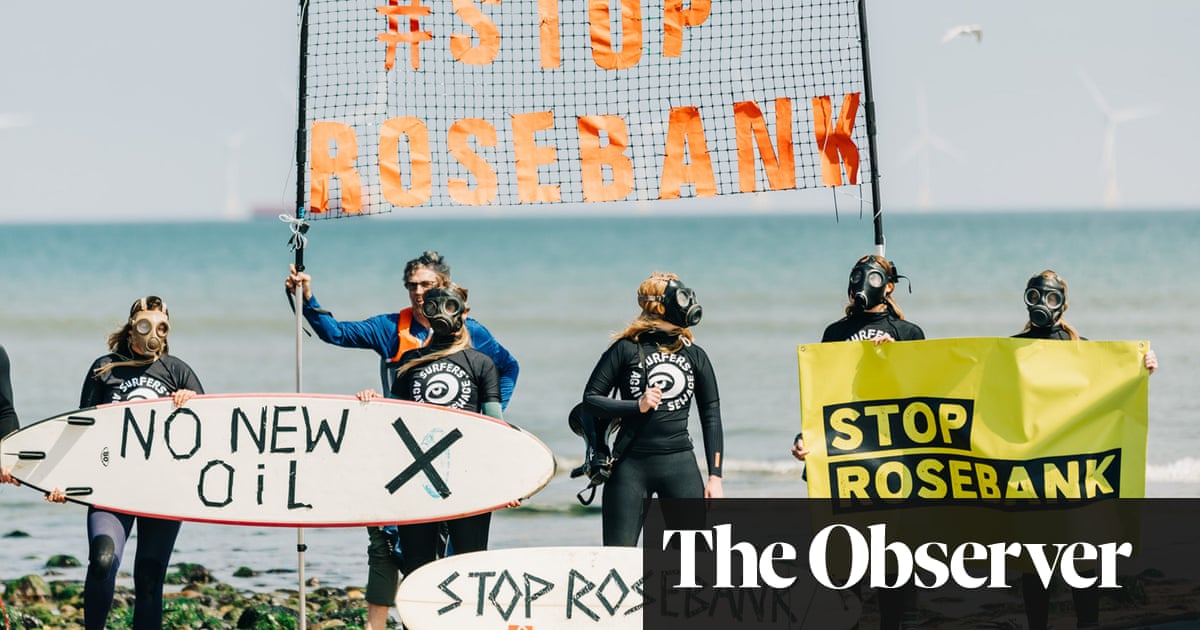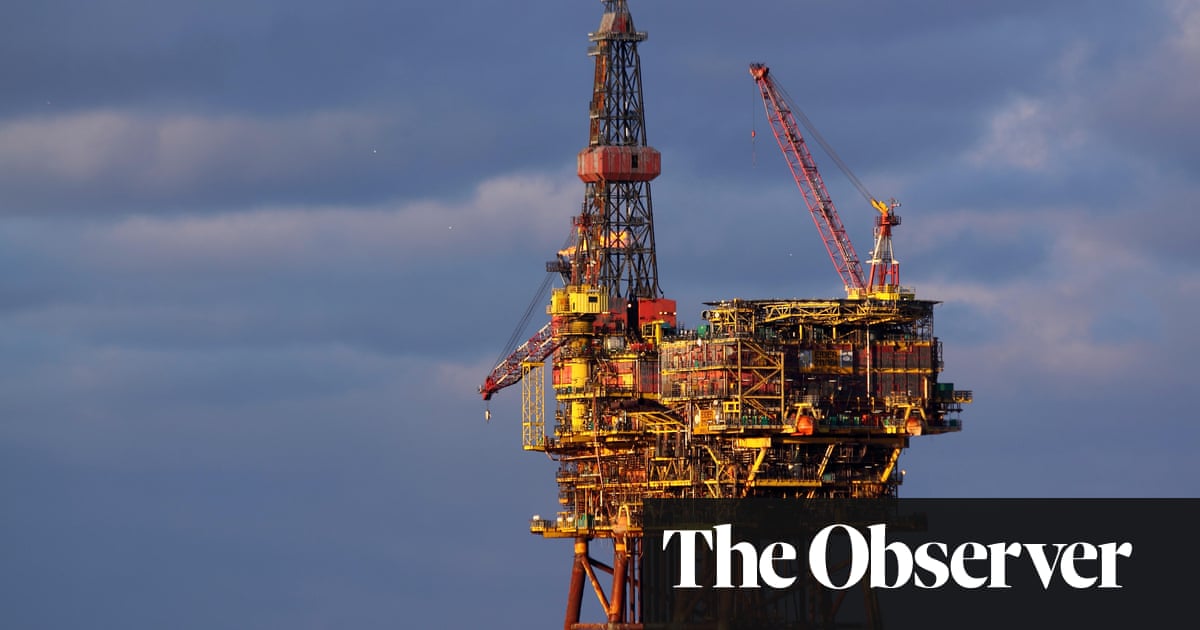
Electricity from a new onshore windfarm could be used to power the biggest undeveloped oilfield in the North Sea, campaigners are warning, ahead of an imminent decision over whether to approve the project.
The huge Rosebank oilfield is three times bigger than the controversial Cambo field that was put on hold more than a year ago. It has the potential to produce 500m barrels of oil and its final approval is expected to reach the energy secretary, Grant Shapps, in the next few weeks. It is expected to be approved after Rishi Sunak hinted last month that it would be “economically illiterate” not to invest in UK oil and gas because Britain will remain reliant on fossil fuels for “the next few decades”.
Reducing its potential emissions will play a major part in the approval process for Rosebank, with its main backer vowing to develop the “lowest possible carbon footprint” for the project. The environmental statement drawn up by the project’s backers suggests that they are exploring the option of sourcing clean energy from a forthcoming onshore windfarm in nearby Shetland.
“Electrification connected to the electrical grid on Shetland has the greatest potential for [greenhouse gas] reduction with the proposed windfarms on Shetland providing a low carbon source of energy via cable,” it states.
The Rosebank field is being developed by the Norwegian state-owned energy company Equinor, which is now under pressure from campaigners not to monopolise the energy produced by Shetland’s new 103-turbine Viking windfarm, which is being completed.
“Rosebank is oil for export and will do nothing to boost the UK’s energy security,” said Tessa Khan, executive director of the campaigning group Uplift. “If it also ends up taking vast amounts of cheap, clean energy that could be used to power hundreds of thousands of homes and businesses, it will end up actively reducing the UK’s energy security. This would be laughable if it wasn’t so serious.
The project has already faced claims that without such electrification plans, the oilfield will blow a hole in the UK’s carbon budgets that should come from oil and gas production, from 2028 onwards. In response, Equinor pointed to a statement from earlier in the year by the oil and gas regulator, the North Sea Transition Authority, in which it stated: “New oil and gas fields in the North Sea can absolutely be in keeping with the UK’s commitment to net zero.”
The conflict exposes the controversies that are being created as fossil fuel producers attempt to alter their plans in order to reduce their emissions. Rosebank is just one of several projects that are exploring the use of renewable power for their fossil fuel extraction operations. Last year, a group of North Sea operators met energy minister Graham Stuart and agreed to look at electrification.
Three new oilfields – Clair South, Rosebank and Cambo – are exploring options for electrification. Analysts from Uplift found that the three would require up to 200-250MW of electricity to power their rigs, equating to at least three-quarters of the energy produced by the Viking windfarm – enough energy to power more than 450,000 UK homes.
“We know that without electrification, Rosebank will bust the industry’s already weak climate targets,” said Khan. “Shetlanders and the UK public at large need to know that this option for decarbonising Rosebank is off the table, before and not after any decision is made on Rosebank. There must be no nasty surprises from Equinor.”
A spokesperson for Equinor said that the project had “the potential to strengthen energy security with oil and gas that is produced with a much lower carbon footprint than current UK production”.
“The field will have a low carbon footprint compared with the current UK Continental Shelf average already before electrification. With electrification, it will be even lower.
“The electrification schedule is driven by the confirmation of the power source, grid connections and necessary offshore and onshore consenting,” said Equinor.












